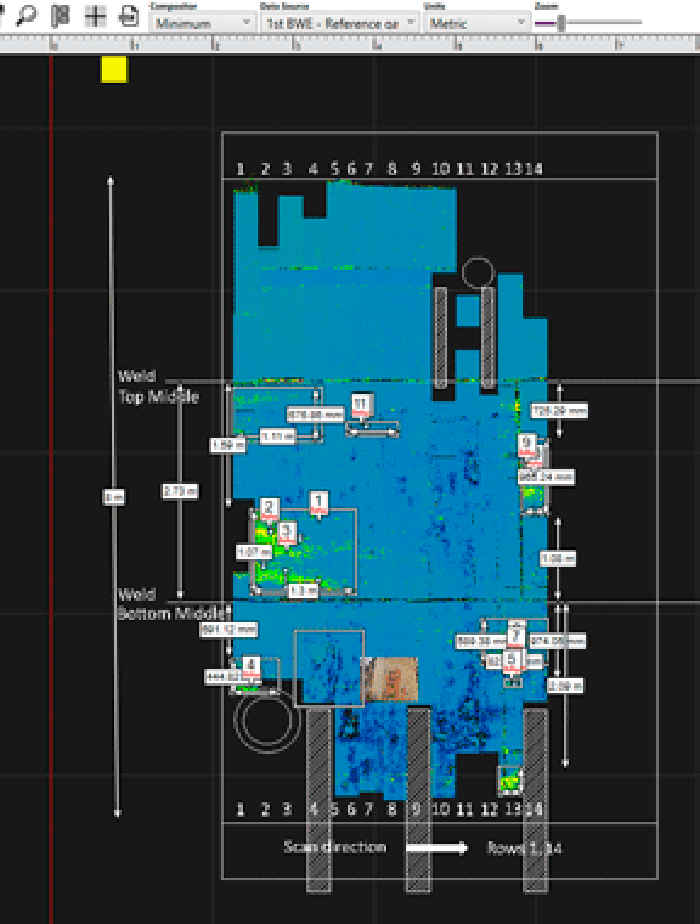Vessel Integrity NDT
Vessel Integrity Inspection
Pressure vessel owners are obligated to ensure their safe use. This requires effective inspection and maintenance programs.
Details
Owners are responsible for developing, documenting, implementing, executing, and assessing pressure vessel inspection systems and inspection procedures that meet relevant requirements. These systems and procedures typically include:
- Organization and reports of structure for inspection personnel
- Documentation and maintenance of inspection and quality assurance procedures
- Documentation and reports of inspection and test results
- Corrective actions for inspection and test results
- Internal audits for compliance with the quality assurance inspection manual
- Review and approval of drawings, design calculations, and specifications for repairs and alterations
Types of Inspection
Careful visual examination is the most important and the most universally accepted method of inspection. However, this does require entering vessels, which presents risks to inspection personnel and requires taking the asset out-of-service, impacting productivity. The need for internal visual inspection can be reduced or potentially eliminated with advanced non-destructive testing (NDT) methods. They include:
- Corrosion mapping
- Ultrasonic thickness measurement and flaw detection
- Magnetic-Flux Leakage (MFL) screening
- Magnetic-Particle Testing (MPT) for cracks and other elongated discontinuities
Advances in corrosion mapping with automated systems used on site and under harsh conditions has opened new possibilities for the effective management of vessels.
Determining Corrosion Rates
This determination is key to calculating the interval between inspection and repair. Using corrosion mapping tools, changes in wall thickness over time can be used as the basis for this calculation, therefore accurate measurements are essential. For new vessels and vessels whose service conditions are changed, the estimation can be based on the following:
Corrosion rates can be calculated from data collected by the owner on vessels providing the same or a similar service
If data on vessels providing the same or a similar service are unavailable, a corrosion rate can be estimated from the owner’s experience or from published data on vessels providing comparable service
If the probable corrosion rate cannot be determined, in-service determinations must be made after approximately 1000 hours of service using suitable corrosion monitoring devices or non-destructive thickness measurements on the vessel. Subsequent determinations shall be made after appropriate intervals until the corrosion rate is established. For all of these scenarios, good quality inspection data is essential, which is offered by efficient NDT tools.









